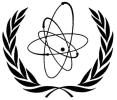VS
As the world’s population increases and there is continued comparison to the current western European, Japanese, and North American living standards, there is likely to be demand for more electrical power. Energy sources available in the world include coal, nuclear, hydroelectric, and gas. In addition, fusion had been originally proposed as the long-term source.
Every form of energy generation has advantages and disadvantages as shown in the table below.
|
Source |
Advantages |
Disadvantages |
| Nuclear |
|
|
| Coal |
|
|
| Hydroelectric |
|
|
| Gas / Oil |
|
|
CONCLUSION:
Throughout the world, we need every energy source we can get – including NUCLEAR. As one can see from the table above, all energy sources have BOTH advantages AND disadvantages. Nuclear has a number of advantages that warrant its use as one of the many methods of supplying an energy-demanding world. Even with conservation efforts, energy demand has been and will continue to increase. Other factors can accelerate that increase, e.g. the proposed shift to electric cars to meet environmental air quality goals. In using each and every one of these forms of energy production, we need to make sure we conserve as much as we can so we leave sources for future generations. Energy suppliers need to ensure that they do not contribute to short and long-term environmental problems. Governments need to ensure energy is generated safely to that neither people nor the environment are harmed.



